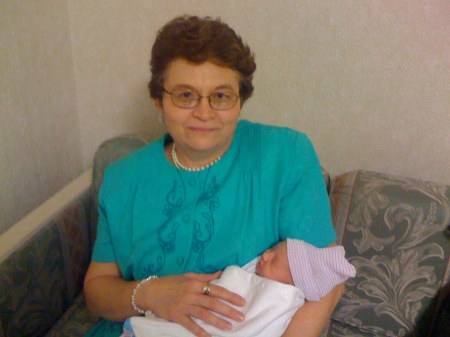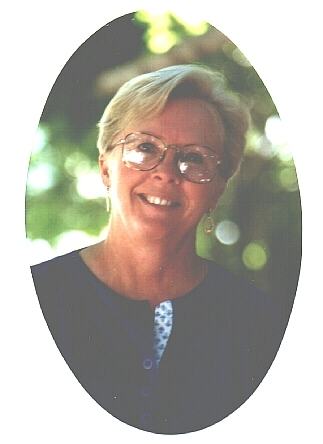Carol Lynn Howe
age ~71
from New Richmond, WI
- Also known as:
-
- Carol L Howe
- Carol I Howe
- Carol Johansen
Carol Howe Phones & Addresses
- New Richmond, WI
- San Diego, CA
- Milton, FL
- Atoka, TN
- Corvallis, OR
- Beaverton, OR
- Milpitas, CA
- 2249 122Nd St, New Richmond, WI 54017
Work
-
Position:Retired
Wikipedia References

Carol Howe
Medicine Doctors

Carol L Howe
view sourceSpecialties:
Family Medicine

Carol Lehman Howe
view sourceSpecialties:
Family Medicine
Geriatric Medicine
Geriatric Medicine
Geriatric Medicine
Geriatric Medicine
Education:
Albany Medical College (1983)
License Records
Carol Ann Howe
License #:
26226 - Expired
Category:
Cosmetology
Issued Date:
Feb 1, 1973
Effective Date:
Apr 12, 1991
Type:
Cosmetologist
Us Patents
-
Inference-Based Tax Preparation
view source -
US Patent:8407113, Mar 26, 2013
-
Filed:Jun 9, 2010
-
Appl. No.:12/797574
-
Inventors:Amir Eftekhari - San Diego CA, US
Carol Ann Howe - San Diego CA, US
Jane L. Ryder - San Diego CA, US
Alan Brian Tifford - San Diego CA, US -
Assignee:Intuit Inc. - Mountain View CA
-
International Classification:G06F 17/22
G07F 19/00 -
US Classification:705 31
-
Abstract:A method for operating a tax inference engine involves receiving tax data items, assigning confidence ratings to the tax data items using inference rules, and assigning relevance ratings to tax questions using the inference rules. The method further involves determining tax questions having ratings that exceed a threshold amount, and ordering the tax questions by the relevance ratings, personalizing a tax question using the inference rules, tax data items, and confidence ratings by altering a wording of the tax question, and determining tax advice using the inference rules, the tax data items, and the confidence ratings.
-
Providing Feedback About An Image Of A Financial Document
view source -
US Patent:20120020532, Jan 26, 2012
-
Filed:Jul 21, 2010
-
Appl. No.:12/840681
-
Inventors:David J. Snow - San Diego CA, US
Brian W. Farwell - Oceanside CA, US
Amir Eftekhari - San Diego CA, US
Carol A. Howe - San Diego CA, US -
Assignee:INTUIT INC. - Mountain View CA
-
International Classification:G06K 9/00
-
US Classification:382112
-
Abstract:A technique for providing feedback about an image of a financial document to a user is described. During this feedback technique, the user provides the image of a financial document, such as W-2 form. For example, the user may take a picture of or may scan the financial document. This image may be analyzed using predefined information in a set of financial documents (such as different types of income-tax documents), and a quality metric for the image may be determined using the analysis. Moreover, the feedback, which is based on the determined quality metric, may be provided to the user. For example, the user may be instructed to retake the image, and the instructions may include an image of the desired orientation and content. In this way, the user may be advised as to how to improve the quality metric in the revised image.
-
Technique For Collecting Income-Tax Information
view source -
US Patent:20120027246, Feb 2, 2012
-
Filed:Jul 29, 2010
-
Appl. No.:12/845947
-
Inventors:Alan Tifford - San Diego CA, US
Jane L. Ryder - San Diego CA, US
Carol A. Howe - San Diego CA, US
Amir Eftekhari - San Diego CA, US -
Assignee:INTUIT INC. - Mountain View CA
-
International Classification:G06K 9/00
-
US Classification:382100
-
Abstract:A technique for collecting income-tax information is described. This collection technique allows a user (such as a taxpayer) to provide income-tax information by submitting an image of a document, such as an income-tax summary or form. After receiving the image, the income-tax information is extracted from the document, and a subset of the income-tax information that is relevant to the user is determined. This subset of the income-tax information is then provided to the user for validation, and the user subsequently provides feedback about the subset of the income-tax information, such as acceptance of the subset or correction of any errors. Furthermore, after receiving the user feedback, fields in an income-tax return of the user may be populated using the subset of the income-tax information.
-
Instant Tax Return Preparation
view source -
US Patent:20120109792, May 3, 2012
-
Filed:Oct 28, 2010
-
Appl. No.:12/914902
-
Inventors:Amir R. Eftekhari - San Diego CA, US
Erikheath A. Thomas - Lincoln NE, US
Carol Ann Howe - San Diego CA, US
George Thomas Ericksen - San Diego CA, US
Gerald Baron Huff - Berkeley CA, US
Gang Wang - San Diego CA, US -
Assignee:INTUIT INC. - Mountain View CA
-
International Classification:G06Q 40/00
G06F 3/048
G06F 21/00 -
US Classification:705 31, 726 19, 715810
-
Abstract:A method involves generating a partially completed tax return based on basic user information without needing to obtain other user inputs through an extensive user interview. A list of simple and concise interview questions are generated or selected from an interview question collection based on the partially completed tax return to finalize the tax return. The method further involves using an inference engine to allow data collection at any time and in any order via specific, personalized questions geared toward completion of the tax return. Therefore the taxpayer spends time reviewing rather than preparing his or her tax documents.
-
System And Method For Providing A Predicted Tax Refund Range Based On Probabilistic Calculation
view source -
US Patent:20210090181, Mar 25, 2021
-
Filed:Dec 7, 2020
-
Appl. No.:17/113994
-
Inventors:- Mountain View CA, US
Massimo Mascaro - San Diego CA, US
R. Jason Char - San Diego CA, US
Carol Ann Howe - San Diego CA, US -
Assignee:Intuit Inc - Mountain View CA
-
International Classification:G06Q 40/00
G06N 5/04 -
Abstract:A method and system provide estimated tax refund data to a user of a tax return preparation system throughout personalized tax return preparation interview. The method and system receive current user tax related data associated with the user, retrieve tax rules data, and gather historical tax related data associated with historical users of the tax return preparation system. The method and system further generate probabilistic inference data including inferences about tax related characteristics of the user based on the historical tax related data and the tax rules data. The method and system provide estimated tax refund data to the user based on the probabilistic inference data.
-
Tax Document Imaging And Processing
view source -
US Patent:20210049708, Feb 18, 2021
-
Filed:Nov 4, 2020
-
Appl. No.:17/088628
-
Inventors:- Mountain View CA, US
Amir Eftekhari - San Diego CA, US
Carol A. Howe - San Diego CA, US
Alan B. Tifford - San Diego CA, US
Jeffrey P. Ludwig - San Diego CA, US -
Assignee:INTUIT INC. - Mountain View CA
-
International Classification:G06Q 40/00
-
Abstract:Methods, systems and articles of manufacture for allowing taxpayers to utilize mobile communication or communication devices such as smartphones and tablet devices to upload tax document images and process tax document images such that resulting recognized tax data is incorporated into an electronic tax return. Authentication data is generated and provided to the taxpayer to establishing a connection with an image processor, which provides recognized tax data to the on-line tax preparation application for incorporation into the electronic tax return. Authentication data may be embodied within a URL address to the image processor that is transmitted as a SMS message to the mobile communication or computing device or encoded within a QR code such that the mobile communication or computing device can be used to take an image of and decode the QR code to determine the URL address and authentication data to establish a connection with the image processor.
-
Network-Based Synchronization System And Method
view source -
US Patent:20200184571, Jun 11, 2020
-
Filed:Dec 5, 2019
-
Appl. No.:16/704132
-
Inventors:- Mountain View CA, US
Ashpak Salim Shaikh - San Diego CA, US
Harsimran S. Badwal - San Diego CA, US
Vitaliy Igorevich Lee - San Deigo CA, US
Brian Joon Chung - San Diego CA, US
Joshua David Ackerman - San Deigo CA, US
Caitlin Elizabeth Flint - San Diego CA, US
Michael Albert Miljour - San Diego CA, US
Karla Julietta Uribe - Chula Vista CA, US
Carol Ann Howe - San Diego CA, US
Robert E. Bamford - San Diego CA, US -
Assignee:Intuit Inc. - Mountain View CA
-
International Classification:G06Q 40/00
H04N 7/18
G06K 9/18 -
Abstract:A network-based synchronization system includes a server executing an electronic tax preparation program. The server is in communication with first and second computing devices through first and second networks. The first computing device utilizes the electronic tax preparation program. The second computing device is a mobile communication device including an image acquisition component and a mobile application executing thereon. The server, and the first and second computing devices are cooperatively operable through the first and second networks to synchronize the electronic tax preparation program and the mobile application based at least in part upon data acquired by the image acquisition component. The server receives the data acquired by the image acquisition component and transmits the data to the first computing device to synchronize the mobile application and the electronic tax preparation program.
-
Layout Reconstruction Using Spatial And Grammatical Constraints
view source -
US Patent:20190026253, Jan 24, 2019
-
Filed:Sep 21, 2018
-
Appl. No.:16/138839
-
Inventors:- Mountain View CA, US
Carol A. HOWE - San Diego CA, US
Christopher M. DYE - San Diego CA, US
Robert BAMFORD - San Diego CA, US -
International Classification:G06F 17/21
-
Abstract:During an image-analysis technique, the system calculates features by performing image analysis (such as optical character recognition) on a received image of a document. Using these features, as well as spatial and grammatical constraints, the system determines a layout of the document. For example, the layout may be determined using constraint-based optimization based on the spatial and the grammatical constraints. Note that the layout specifies locations of content in the document, and may be used to subsequently extract the content from the image and/or to allow a user to provide feedback on the extracted content by presenting the extracted content to the user in a context (i.e., the determined layout) that is familiar to the user.
Isbn (Books And Publications)

Hemorrhage during Late Pregnancy and the Puerperium: A Staff Development Program in Perinatal Nursing Care
view sourceAuthor
Carol H. Howe
ISBN #
0865250294

Hemorrhage during Late Pregnancy and the Puerperium
view sourceAuthor
Carol L. Howe
ISBN #
0865250332
Youtube
Myspace
Flickr
Plaxo

Rob & Carol Howe
view sourceEnglandROLLS ROYCE
Classmates

Carol Pritchett (Howe)
view sourceSchools:
Shamrock High School Shamrock TX 1962-1966
Community:
Larry Holmes, Larry Flowers, Joe Parr

Carol Watson (Howe)
view sourceSchools:
Driffill Elementary School Oxnard CA 1955-1956, McKinna Elementary School Oxnard CA 1957-1960, Haydock Intermediate School Oxnard CA 1961-1962
Community:
Douglas Flight

Carol Howe (Goff)
view sourceSchools:
Gulfport East High School Gulfport MS 1972-1976
Community:
Robert Mathews, Marilynne Murray, Janet Moffett

Carol Howe (Grzymkowski)
view sourceSchools:
University of Alabama Tuscaloosa AL 1962-1966
Community:
Mike Wilhite, Yvonne Jackson, Trygve Peterson

Carol Howe (Spacek)
view sourceSchools:
St. Mary's Academy Milwaukee WI 1968-1972
Community:
Clarence Dep, Terry Scholz, Bruce Conley

Carol Howe (Davis)
view sourceSchools:
Walter F. George High School Atlanta GA 1966-1970
Community:
Deborah Arnesen, Reena Caldwell

Carol Howe (Lapuszynski)
view sourceSchools:
South Otselic Central School South Otselic NY 1963-1967
Community:
Sue Huntley, Richard Greene, Carolyn White, Patrick Mclaughlin

Carol Howe
view sourceSchools:
Chatham High School Chatham MA 1974-1978
Community:
Julie Miller, Jim Woodland
Googleplus

Carol “Cj” Howe
Work:
Health Quest EMS - Supervisor/W/C transport (8)

Carol Howe
Tagline:
Come and experience the difference in Massage and reflexology!!!

Carol Howe

Carol Howe

Carol Howe

Carol Howe

Carol Howe

Carol Howe

Carol Weaver Howe
view source
Carol Smith Howe
view source
Carol Newbury Howe
view source
Carol Bruzan Howe
view source
Carol Hernandez Howe
view source
Carol Ann Howe
view source
Carol Rackham Howe
view source
Carol Jackson Howe
view sourceGet Report for Carol Lynn Howe from New Richmond, WI, age ~71















